Top 19 Most Haunting Dark Paintings of All Time
Author:
GeorgeUpdated:
01.02.2025
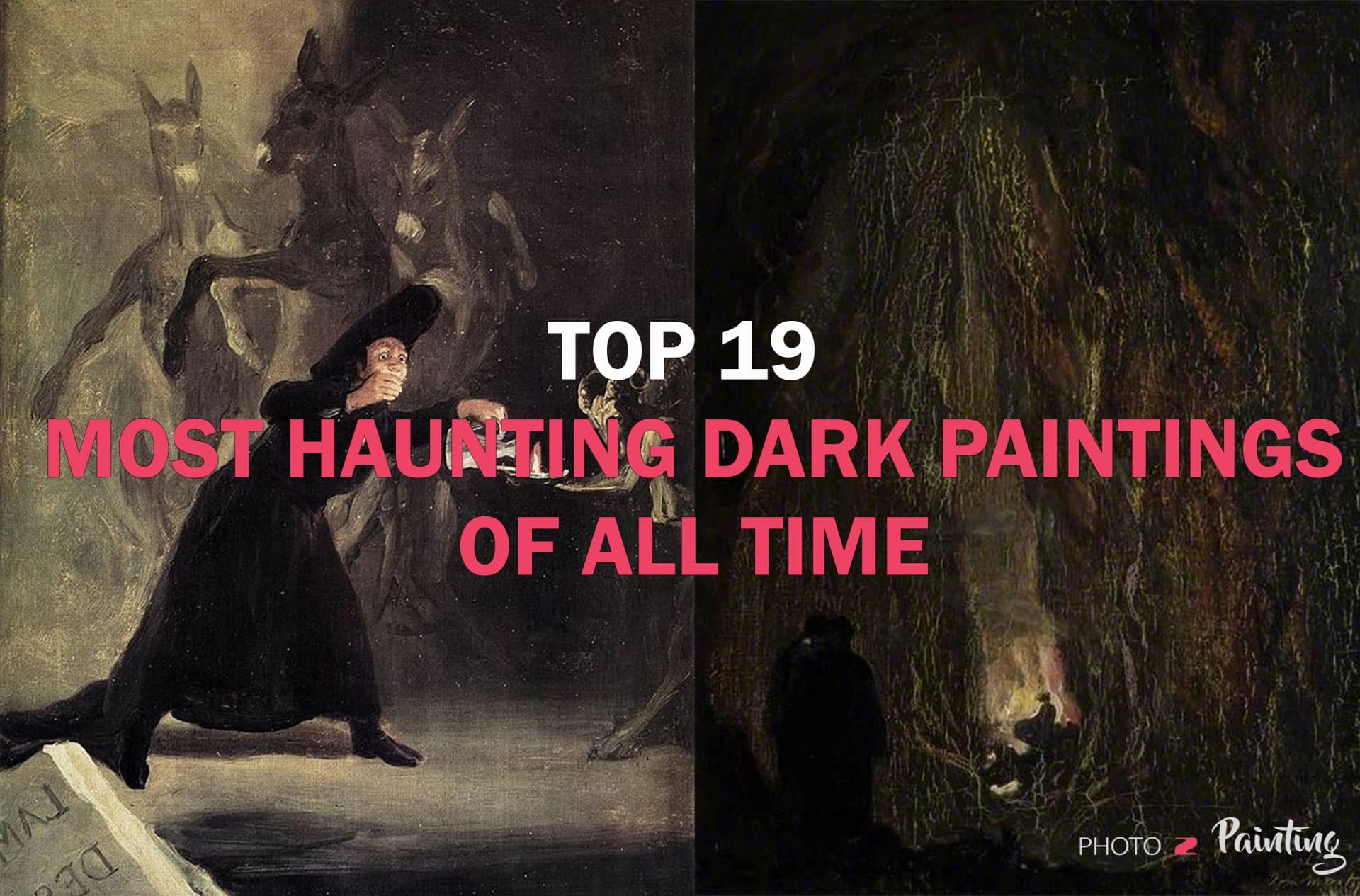

- What Are Dark Paintings?
- 1. "The Nightmare" by Henry Fuseli (1781)
- 2. "Saturn Devouring His Son" by Francisco Goya (1819-1823)
- 3. "The Raft of the Medusa" by Théodore Géricault (1818-1819)
- 4. "The Scream" by Edvard Munch (1893)
- 5. "The Garden of Earthly Delights" (Right Panel) by Hieronymus Bosch (1490-1500)
- 6. "Isle of the Dead" by Arnold Böcklin (1880)
- 7. "Judith Beheading Holofernes" by Caravaggio (1598-1599)
- 8. "The Great Day of His Wrath" by John Martin (1851-1853)
- 9. "Christ of Saint John of the Cross" by Salvador Dalí (1951)
- 10. "Study after Velázquez's Portrait of Pope Innocent X" by Francis Bacon (1953)
- 11. "Ophelia" by John Everett Millais (1851–1852)
- 12. "The Death of Marat" by Jacques-Louis David (1793)
- 13. "Guernica" by Pablo Picasso (1937)
- 14. "The Temptation of Saint Anthony" by Matthias Grünewald (1512–1516)
- 15. "The Triumph of Death" by Pieter Bruegel the Elder (1562)
- 16. "The Execution of Lady Jane Grey" by Paul Delaroche (1833)
- 17. "Head of Medusa" by Peter Paul Rubens (1617–1618)
- 18. "The Rape of the Sabine Women" by Nicolas Poussin (1637–1638)
- 19. "The Massacre of the Innocents" by Peter Paul Rubens
- Why Dark Paintings Remain Relevant
Dark paintings have a special way of capturing attention and drawing viewers into their mysterious and emotional worlds. These artworks hold a kind of magic that many find impossible to ignore. With their dramatic brushstrokes and shadowy scenes, they invite us to step into the artist’s mind and ask questions about what they were thinking or feeling. Was it fear, sadness, or a sense of wonder about the unknown? Each painting tells a different story, filled with emotions that resonate deeply with us.
These feelings—whether it’s the sorrow of Ophelia, the terror in The Scream, or the chaos in The Raft of the Medusa—make dark paintings unforgettable. They explore themes like fear, loss, mystery, and even hope, showing the complexity of human experiences.
As Yayoi Kusama said:
"Dark paintings can be a source of hope, showing us that even in the darkest of times, there is always light."
Here, we explore the history of dark paintings, the stories they tell, and why they continue to inspire.
What Are Dark Paintings?
Dark paintings are artworks that use shadows, deep colors, and dramatic lighting to create a strong mood or tell emotional stories. These paintings often explore serious and thought-provoking themes such as mystery, death, the supernatural, or the meaning of life.
Throughout history, dark art has changed and evolved through different painting styles. In the Baroque period, artists like Caravaggio used light and shadow to create dramatic scenes. During the Romantic era, painters focused on emotional and imaginative themes, often showing nature’s power and human struggles. In modern art, dark paintings explore personal feelings, fears, and abstract ideas, reflecting the complexities of the world we live in.
Dark paintings stand out because they don’t just show beauty—they make us feel and think deeply, connecting us to emotions and stories that might otherwise stay hidden.
1. "The Nightmare" by Henry Fuseli (1781)
Henry Fuseli's “The Nightmare” is one of the most iconic Gothic paintings, famous for its eerie and unsettling atmosphere. The painting shows a woman sprawled across her bed, seemingly unconscious or trapped in a nightmare, while a demonic creature, known as an incubus, crouches on her chest. Behind them, a ghostly horse with glowing eyes peeks through a curtain, adding to the painting's haunting quality.
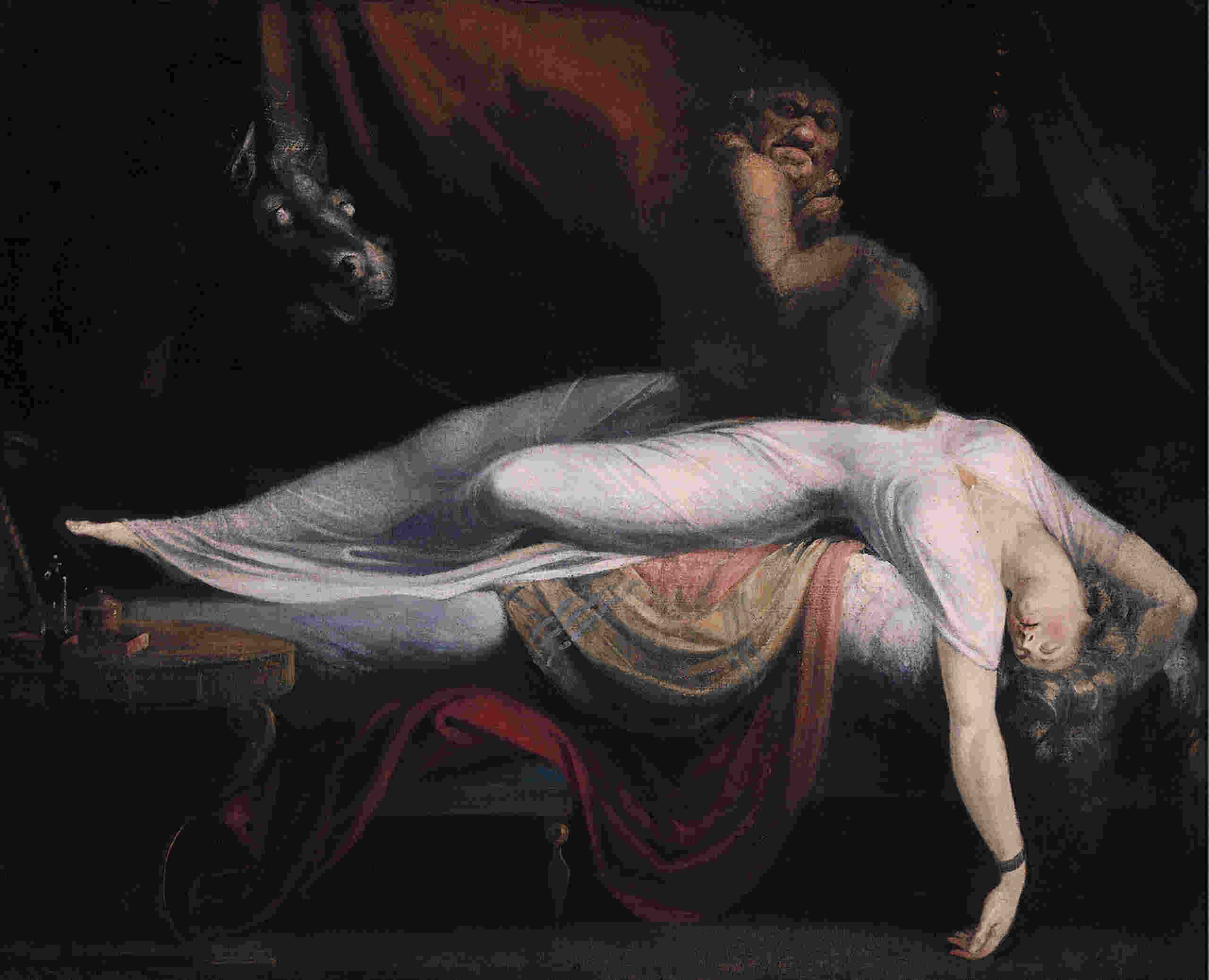
The work captures the fear of the unknown, exploring themes of dreams, the supernatural, and subconscious terror. At the time it was created, it shocked audiences because it dealt with such personal and psychological fears in an intense and dramatic way. Today, The Nightmare remains a powerful reminder of how art can explore the darkest corners of the human mind.
2. "Saturn Devouring His Son" by Francisco Goya (1819-1823)
Francisco Goya’s “Saturn Devouring His Son” is one of the most disturbing and powerful works of art. It shows the mythological god Saturn eating one of his children to prevent a prophecy that said one of them would overthrow him. In the painting, Saturn is wild-eyed, his mouth tearing into the body of his son in a frenzy. The scene is horrifying, with stark contrasts of light and shadow that make it feel raw and emotional.
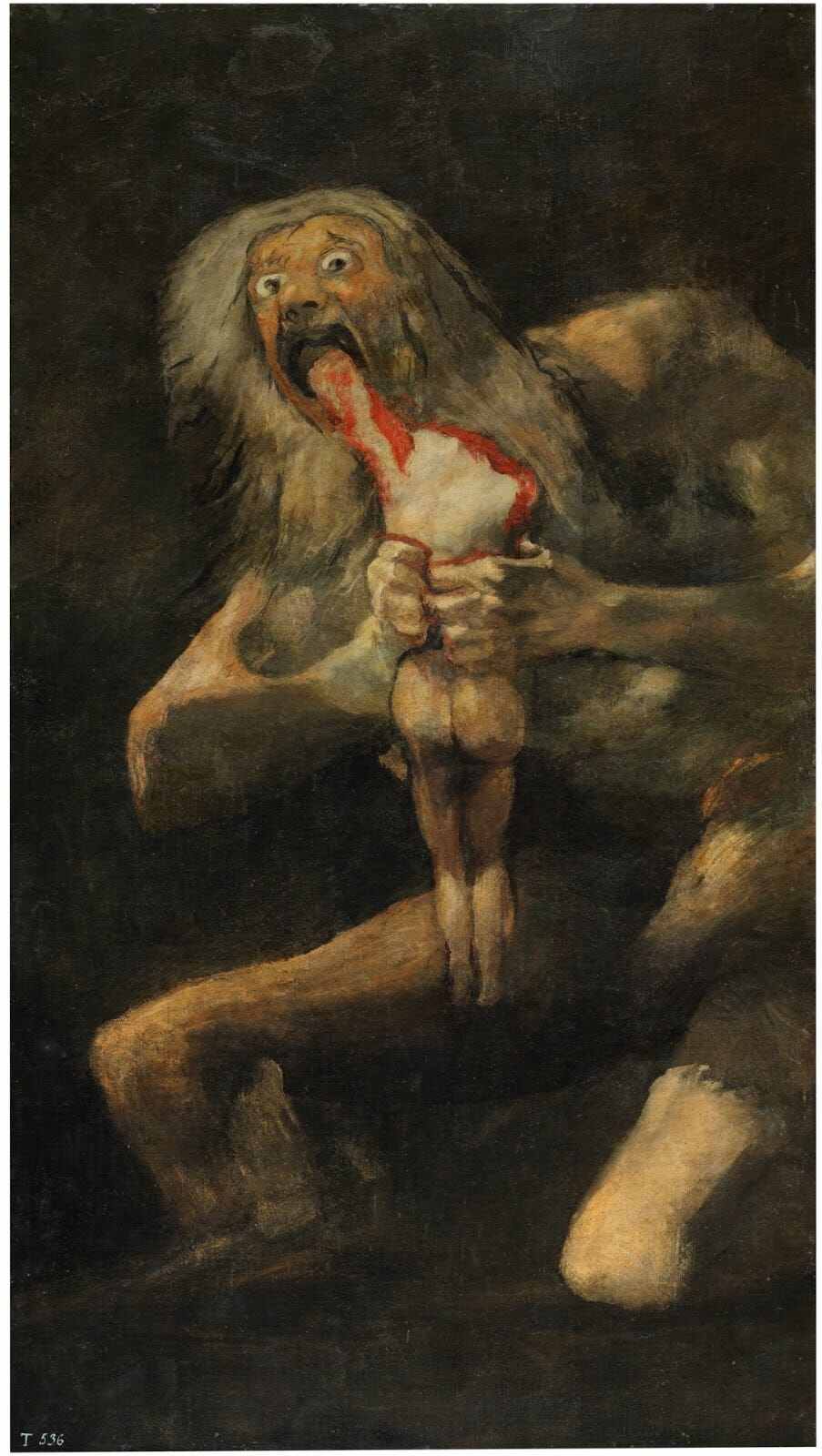
This work is part of Goya’s "Black Paintings," a series created during a dark period of his life when he was isolated and deeply pessimistic about humanity. The painting not only tells a mythological story but also reflects Goya’s feelings about power, destruction, and fear of time itself. Its brutal imagery stays with viewers long after they see it.
3. "The Raft of the Medusa" by Théodore Géricault (1818-1819)
Théodore Géricault’s “The Raft of the Medusa” is a dramatic and tragic oil painting based on a real-life shipwreck in 1816. It shows survivors on a makeshift raft, struggling to stay alive after being abandoned by their captain. The painting captures the desperation and suffering of the moment, with bodies sprawled across the raft and others reaching out for rescue in the distance. Géricault spent months preparing for the painting, studying dead bodies in morgues to make the scene as realistic as possible.
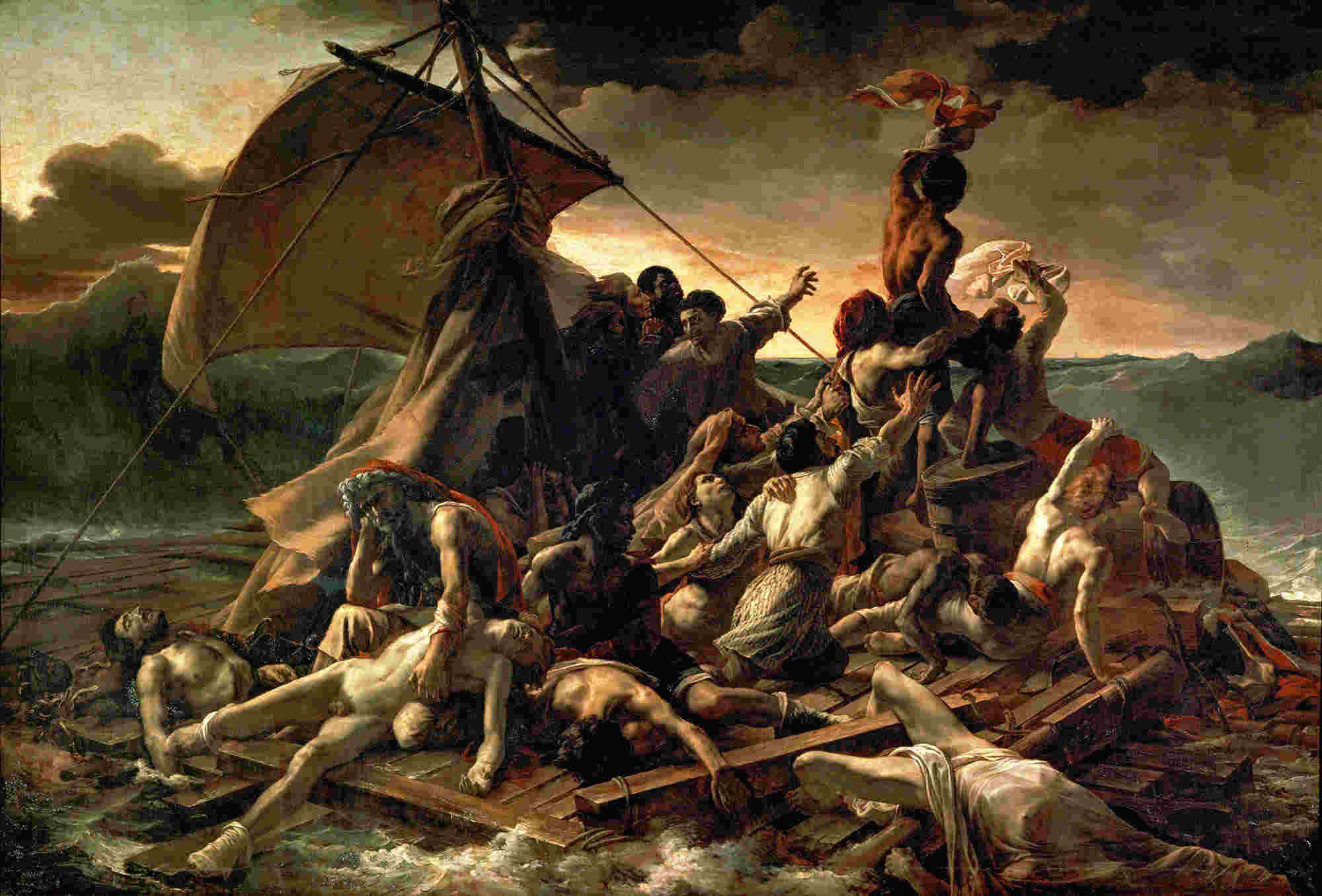
The work is both horrifying and heroic, showing the strength and suffering of the human spirit. It also criticized political corruption, as the shipwreck was caused by the incompetence of a politically appointed captain. The painting’s raw emotion and powerful storytelling make it one of the most memorable works of the Romantic period.
4. "The Scream" by Edvard Munch (1893)
Edvard Munch’s “The Scream” is one of the most famous surrealist paintings in the world, symbolizing fear, anxiety, and the fragility of the human mind. The painting shows a figure standing on a bridge, clutching its face in terror, as the swirling sky and landscape create a sense of chaos and unease. Munch explained that the idea came from a moment when he felt a “scream passing through nature,”. It reflected his own struggles with mental health and existential fear.
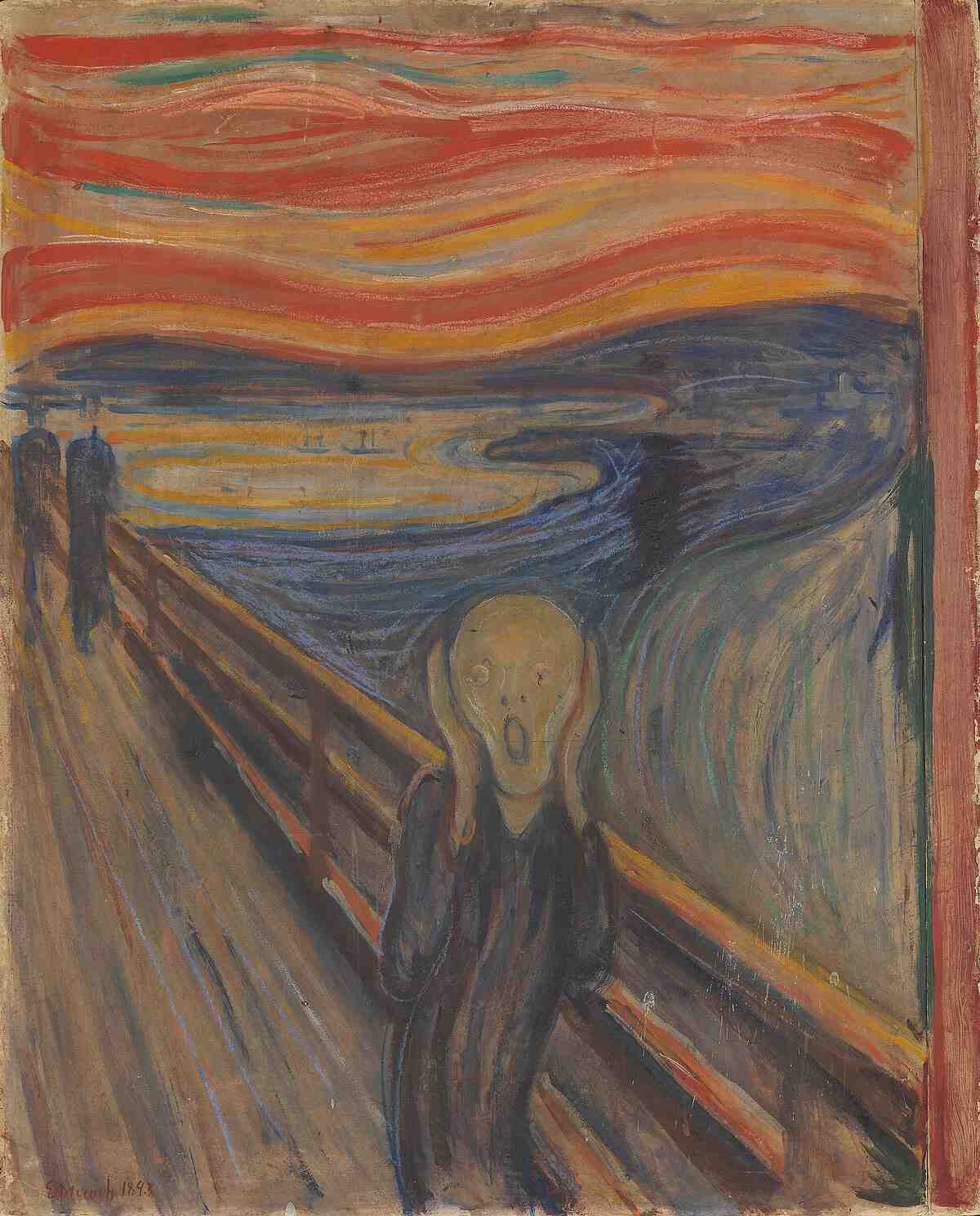
The bold colors and distorted shapes make the painting feel alive and overwhelming, pulling viewers into the figure’s emotional turmoil. The Scream is often seen as a symbol of modern life, capturing the stress and uncertainty that many people feel even today.
5. "The Garden of Earthly Delights" (Right Panel) by Hieronymus Bosch (1490-1500)
The right panel of Hieronymus Bosch’s “The Garden of Earthly Delights” is a terrifying vision of hell, filled with strange creatures, tortured souls, and chaotic landscapes. Unlike traditional religious depictions of hell, Bosch’s vision is surreal and imaginative, with bizarre figures and unnatural scenarios that feel both nightmarish and fascinating. The panel warns of the consequences of sin, showing people being punished in grotesque and symbolic ways. For example, musical instruments are used as tools of torture, and humans are swallowed by strange monsters.
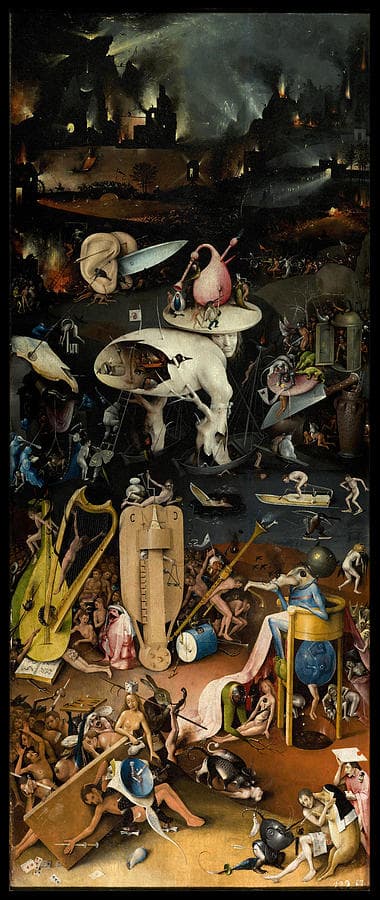
Bosch’s creativity and attention to detail make the painting endlessly interesting, as viewers can always find something new to notice. This art style reflects the fears and beliefs of the medieval world but also resonates with modern audiences for its unique and unsettling portrayal of human suffering.
6. "Isle of the Dead" by Arnold Böcklin (1880)
Arnold Böcklin’s “Isle of the Dead” is a mysterious and haunting painting that shows a small boat approaching a quiet, rocky island. On the boat, a standing figure, possibly representing death, is seen alongside a white-covered coffin. The island itself is filled with tall, dark cypress trees, which are often symbols of mourning and the afterlife.
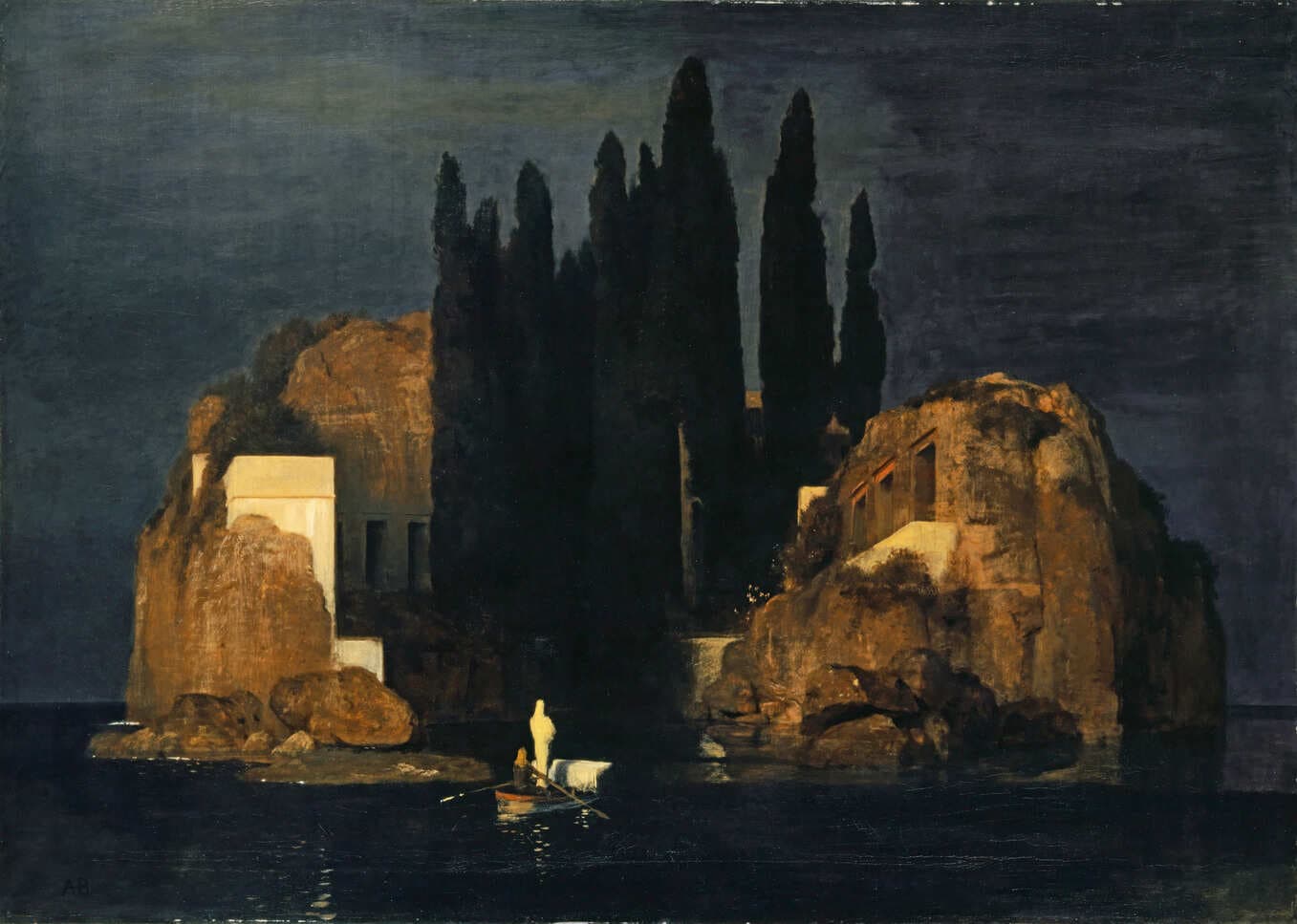
Böcklin painted several versions of this work, each one evoking a sense of silence, mystery, and the unknown. The painting does not explain its story, leaving viewers to interpret its meaning on their own. Many see it as a meditation on death and the journey to the afterlife. Its quiet, somber mood makes it both beautiful and unsettling, capturing the imagination of all who see it.
7. "Judith Beheading Holofernes" by Caravaggio (1598-1599)
Caravaggio’s “Judith Beheading Holofernes” is a powerful and shocking painting that captures the moment when Judith, a biblical heroine, kills the Assyrian general Holofernes to save her people. The painting shows Judith with a determined expression as she uses a sword to decapitate Holofernes, while her maid assists her.
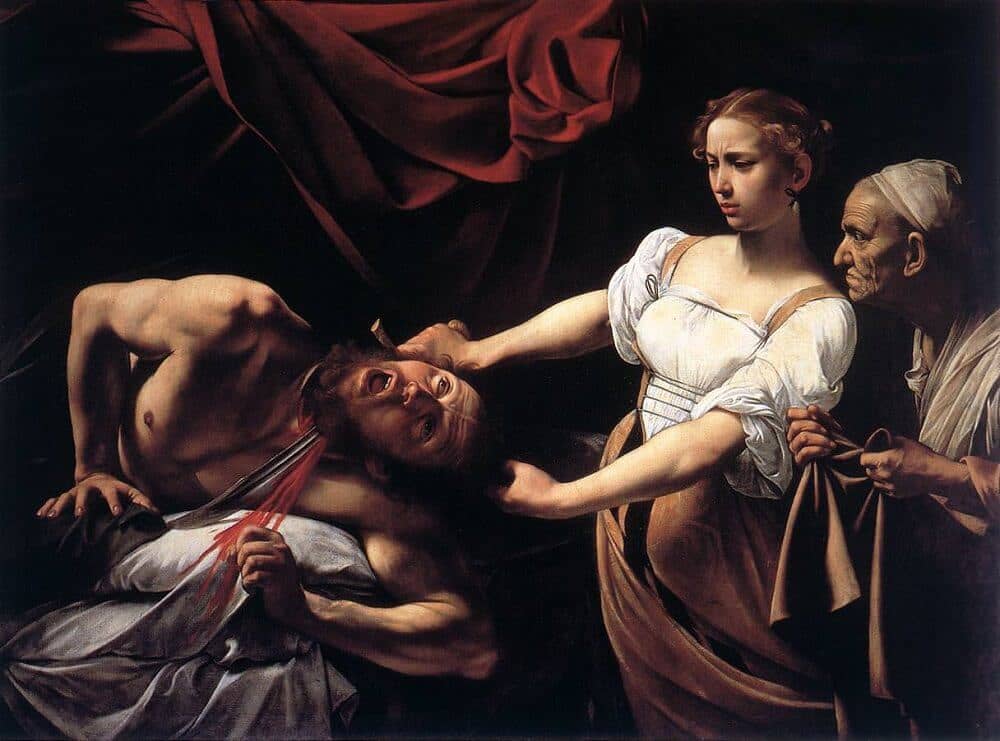
Caravaggio’s use of light and shadow, known as chiaroscuro, creates a dramatic and intense scene. The painting is full of emotion, from Judith’s calm focus to Holofernes’s expression of shock and pain. This work demonstrates Caravaggio’s ability to make scenes feel real and raw, leaving viewers both impressed and unsettled by its vivid details.
8. "The Great Day of His Wrath" by John Martin (1851-1853)
“The Great Day of His Wrath” by John Martin is a dramatic painting that shows a terrifying apocalyptic landscape. Painted between 1851 and 1853, it depicts the earth breaking apart, mountains collapsing, and fiery skies as chaos spreads everywhere. The scene is filled with movement and destruction, making viewers feel the power of nature and divine judgment.
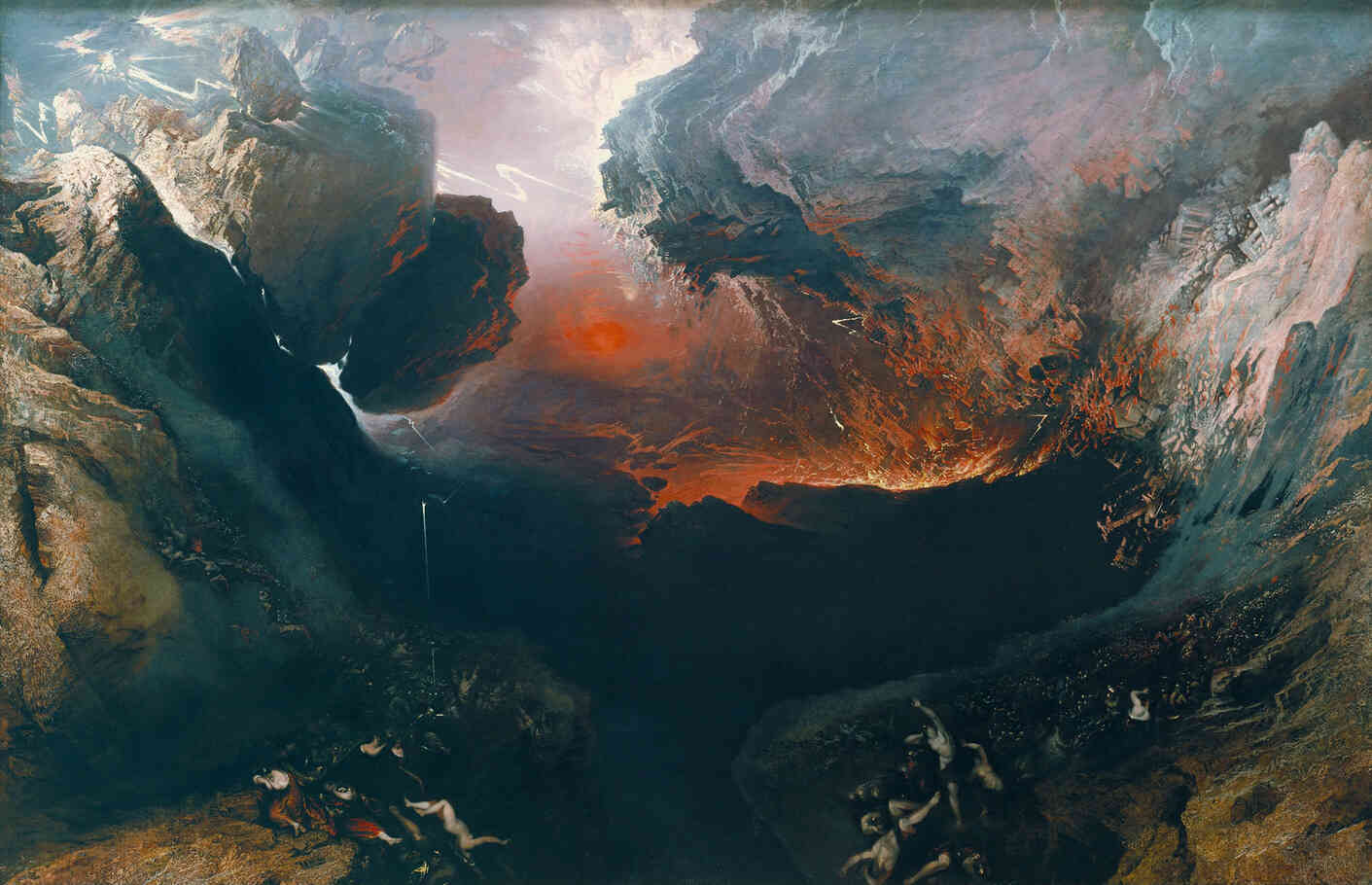
The dark, fiery tones and vast, crumbling landscape create a sense of fear and awe. John Martin's work shows how small humans are compared to the forces of nature, leaving a lasting impression of both beauty and destruction.
9. "Christ of Saint John of the Cross" by Salvador Dalí (1951)
Salvador Dalí’s “Christ of Saint John of the Cross” is a striking and unique painting of the crucifixion. Unlike traditional depictions, this painting shows Christ from above, as though the viewer is looking down on him from the heavens. The figure of Christ is illuminated, creating a feeling of peace and spiritual power. Beneath him, a calm seascape stretches out, adding to the sense of serenity.
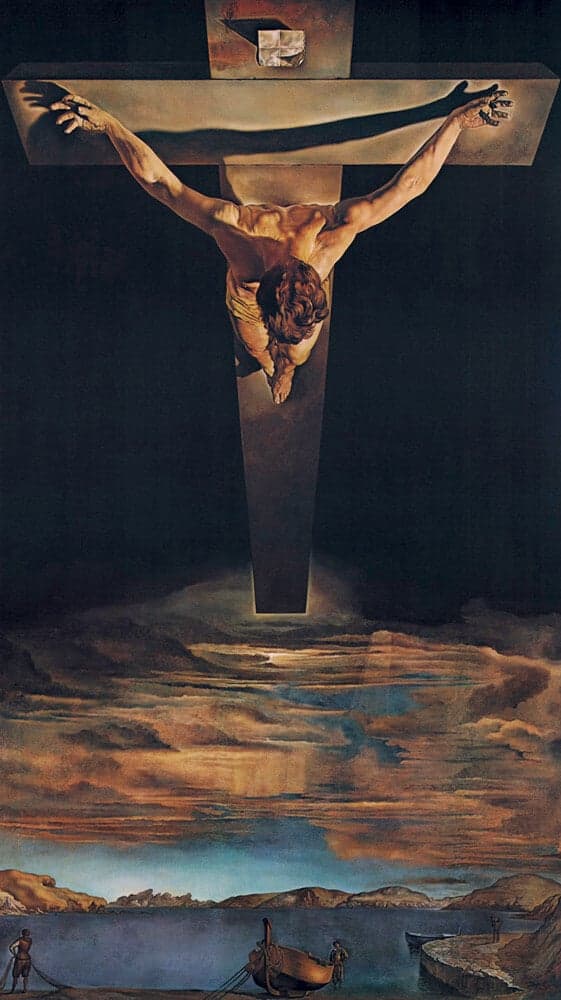
Dalí’s use of light and perspective makes the painting feel otherworldly, emphasizing the divine nature of Christ. The work is both beautiful and thought-provoking, blending surrealism with religious themes.
10. "Study after Velázquez's Portrait of Pope Innocent X" by Francis Bacon (1953)
Francis Bacon’s “Study after Velázquez's Portrait of Pope Innocent X” is a dark and disturbing reinterpretation of Diego Velázquez’s famous portrait. Bacon transforms the image of the pope into a nightmarish figure, screaming in silence while surrounded by shadowy lines and distorted shapes.
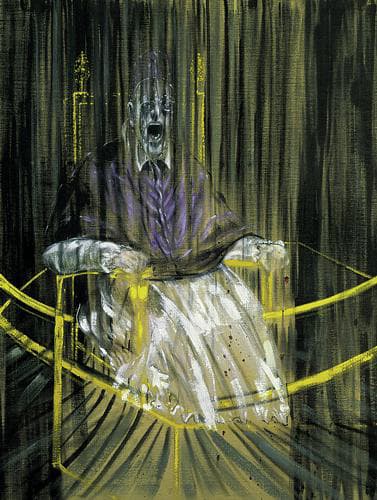
The painting captures feelings of fear, power, and isolation, reflecting Bacon’s interest in the darker side of human experience. This work is not just a critique of authority but also an exploration of the human condition, showing how power can lead to loneliness and despair.
11. "Ophelia" by John Everett Millais (1851–1852)
John Everett Millais’s “Ophelia” is a hauntingly beautiful painting that shows the tragic death of Ophelia, a character from Shakespeare’s Hamlet. The painting depicts Ophelia floating in a river, surrounded by flowers, just moments after drowning. Millais’s attention to detail brings the scene to life, with vibrant plants and a serene yet eerie atmosphere.
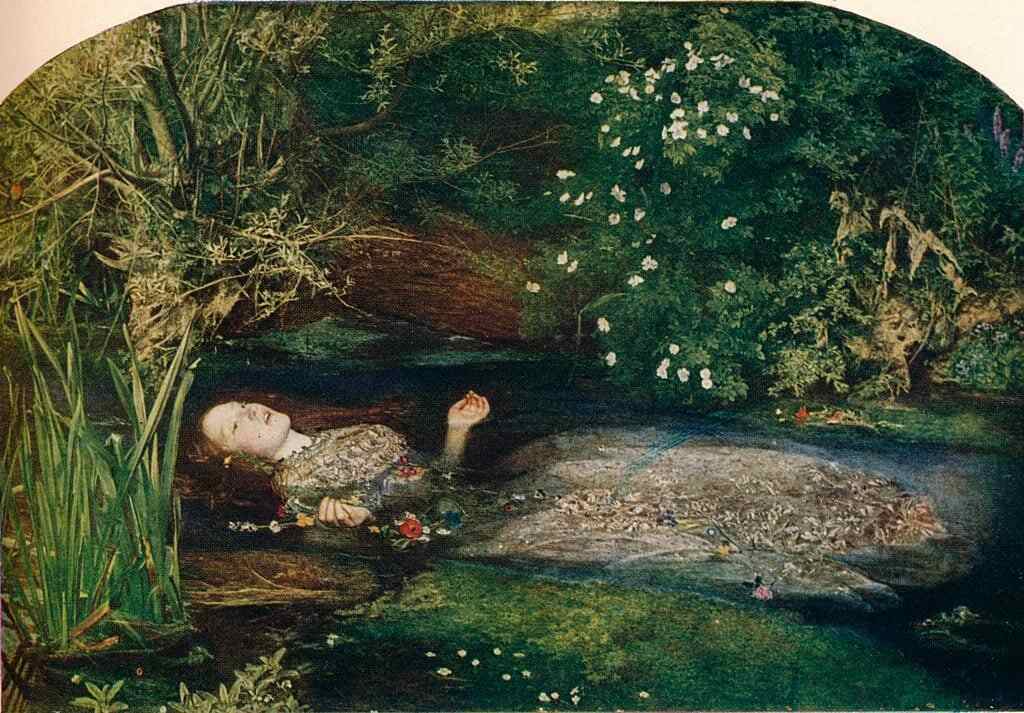
While the painting is visually stunning, it is also a deeply sad painting, as it captures the fragility of life and the pain of loss. The combination of beauty and tragedy makes Ophelia one of the most memorable works of the Pre-Raphaelite Brotherhood.
12. "The Death of Marat" by Jacques-Louis David (1793)
Jacques-Louis David’s “The Death of Marat” is a powerful and emotional painting that depicts the assassination of Jean-Paul Marat, a key figure in the French Revolution. Marat is shown lying dead in his bathtub, holding a letter in one hand while blood drips from his wound. David painted Marat as a martyr, using soft light and calm colors to create a sense of dignity and peace.
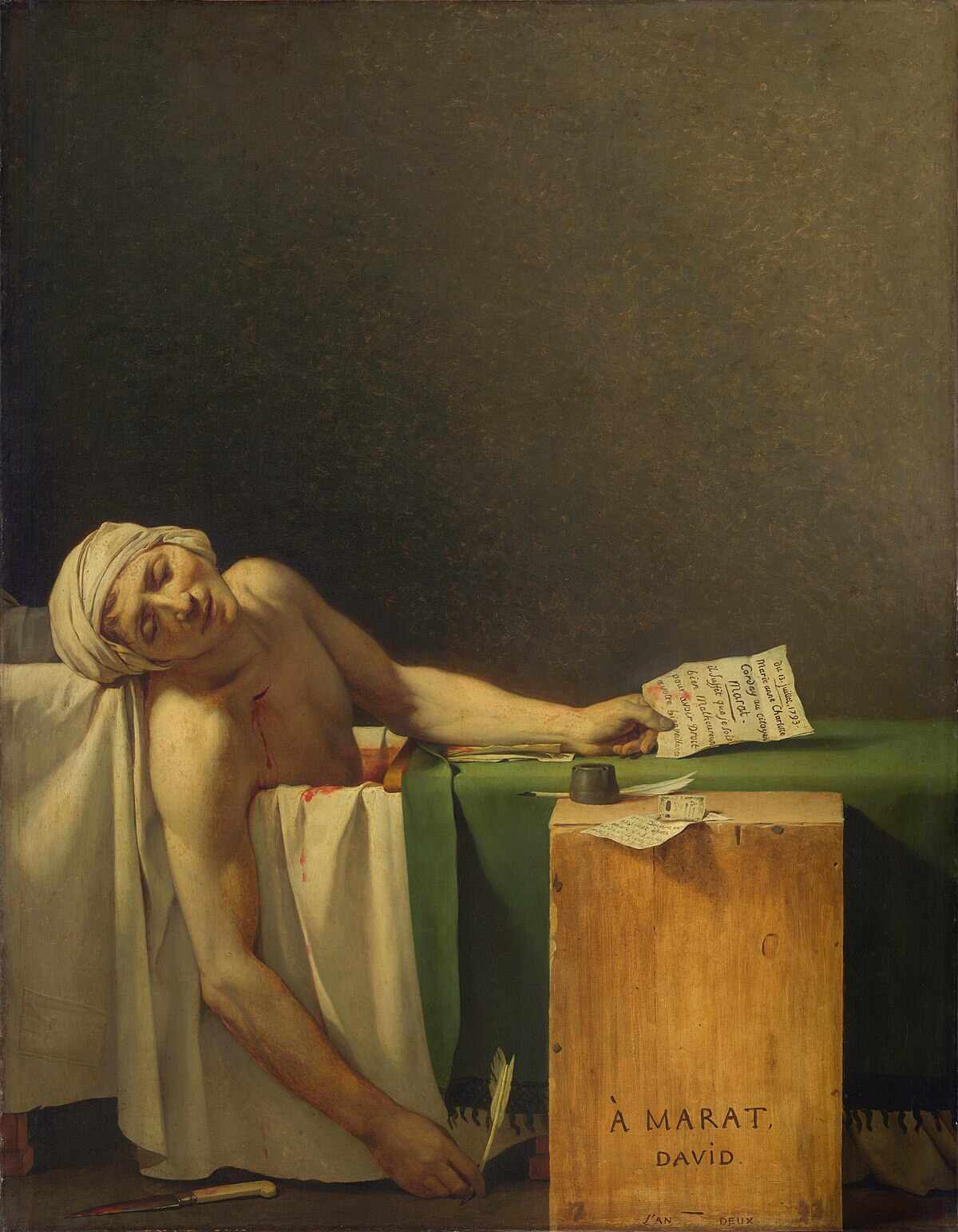
The painting became a symbol of the revolution, showing the sacrifice of those who fought for change. It remains a striking example of how art can capture both history and emotion.
13. "Guernica" by Pablo Picasso (1937)
Pablo Picasso’s “Guernica” is a massive and powerful painting that depicts the horrors of war. Created in response to the bombing of the town of Guernica during the Spanish Civil War, the painting is filled with fragmented and distorted figures, including screaming women, a fallen soldier, and a terrified horse.
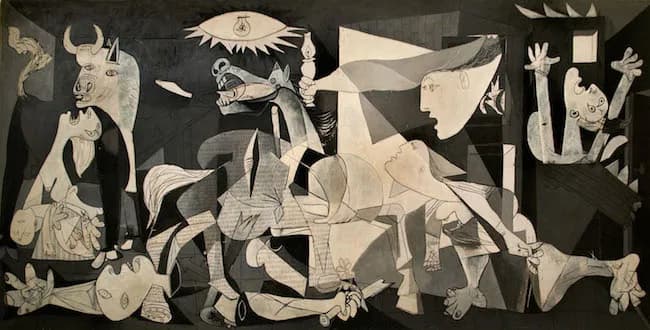
The black, white, and gray colors add to the feeling of despair and chaos. Guernica is not only a protest against violence but also a reminder of the suffering caused by war. Its emotional impact and bold style make it one of the most important works of modern art.
14. "The Temptation of Saint Anthony" by Matthias Grünewald (1512–1516)
Matthias Grünewald’s “The Temptation of Saint Anthony” is a vivid and unsettling painting that shows the saint being attacked by terrifying demons. The painting is filled with strange and grotesque figures, each one representing different temptations and fears. The chaotic scene captures the struggle between good and evil, as Saint Anthony remains steadfast in his faith despite the horrors around him.
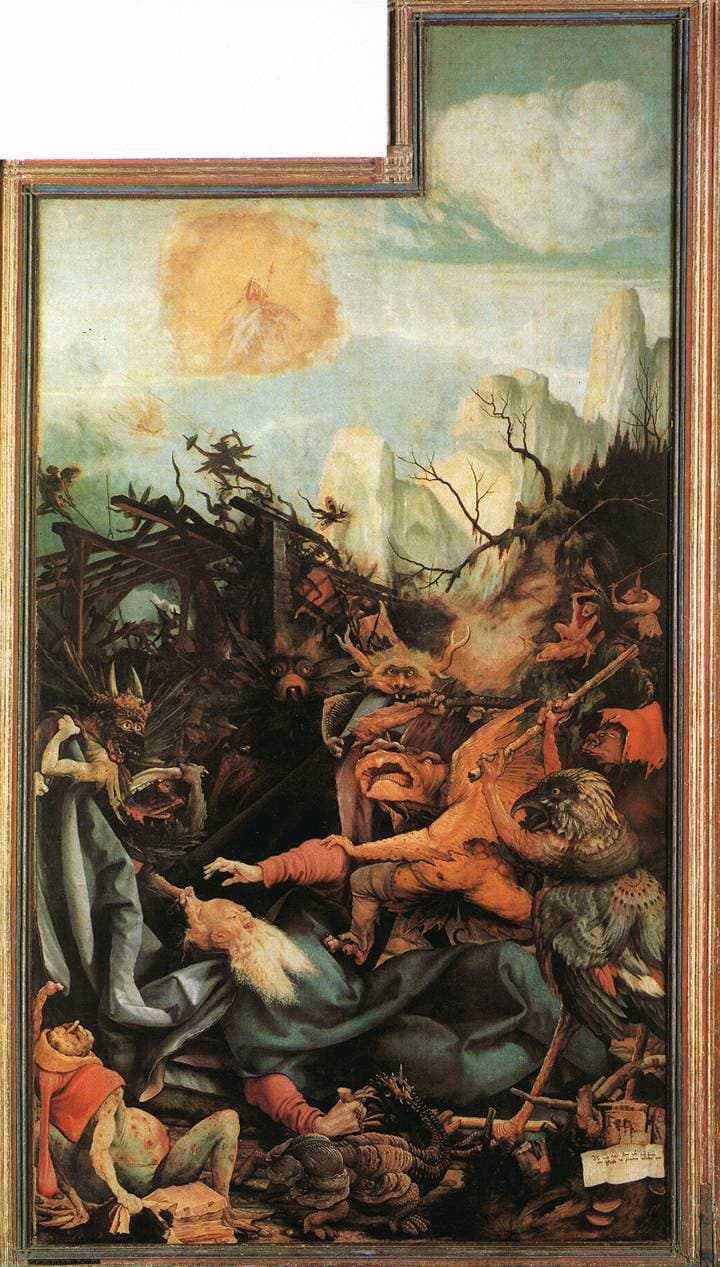
Grünewald’s detailed and imaginative style makes this painting both frightening and captivating, showing the strength of the human spirit in the face of darkness.
15. "The Triumph of Death" by Pieter Bruegel the Elder (1562)
Pieter Bruegel the Elder’s “The Triumph of Death” is a grim and detailed painting that shows an apocalyptic scene of death overtaking the world. Skeletons march through a landscape, killing people and destroying everything in their path. The painting reflects the fears of the time, as Europe was dealing with wars, famine, and the plague.
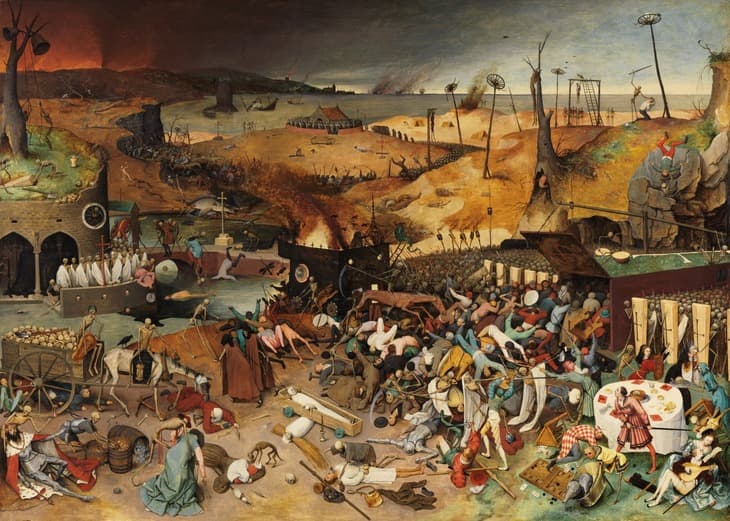
Despite its dark subject, the painting is full of intricate details that tell many smaller stories within the larger scene. It serves as a reminder of life’s fragility and the inevitability of death.
16. "The Execution of Lady Jane Grey" by Paul Delaroche (1833)
Paul Delaroche’s “The Execution of Lady Jane Grey” is a dramatic and emotional painting that captures the final moments of Lady Jane Grey, who was executed at the age of 16 after a brief reign as Queen of England. In the painting, Lady Jane is shown blindfolded, being guided to the execution block by a guard. Her white dress symbolizes her innocence, while the dark surroundings create a somber and tense atmosphere.
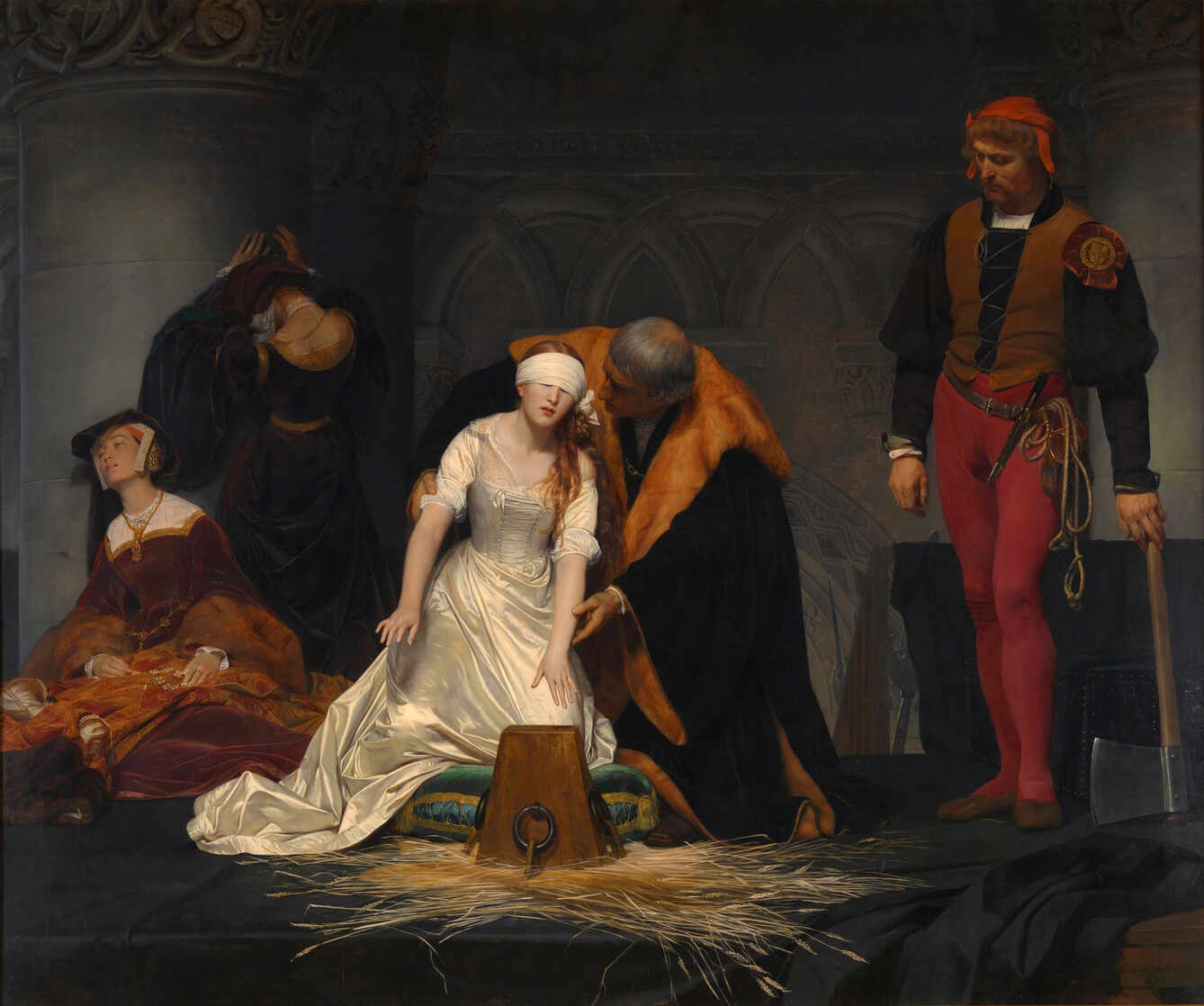
Delaroche’s attention to detail and the tender depiction of Lady Jane make the painting incredibly moving. It highlights not just the tragedy of her death but also the cruelty of political power struggles.
17. "Head of Medusa" by Peter Paul Rubens (1617–1618)
Peter Paul Rubens’s “Head of Medusa” is a striking and chilling painting that depicts the severed head of the mythical Gorgon, Medusa. Her head lies on the ground, surrounded by snakes that seem to writhe and come to life. Rubens captures both the horror and the beauty of the moment, with Medusa’s face frozen in terror.
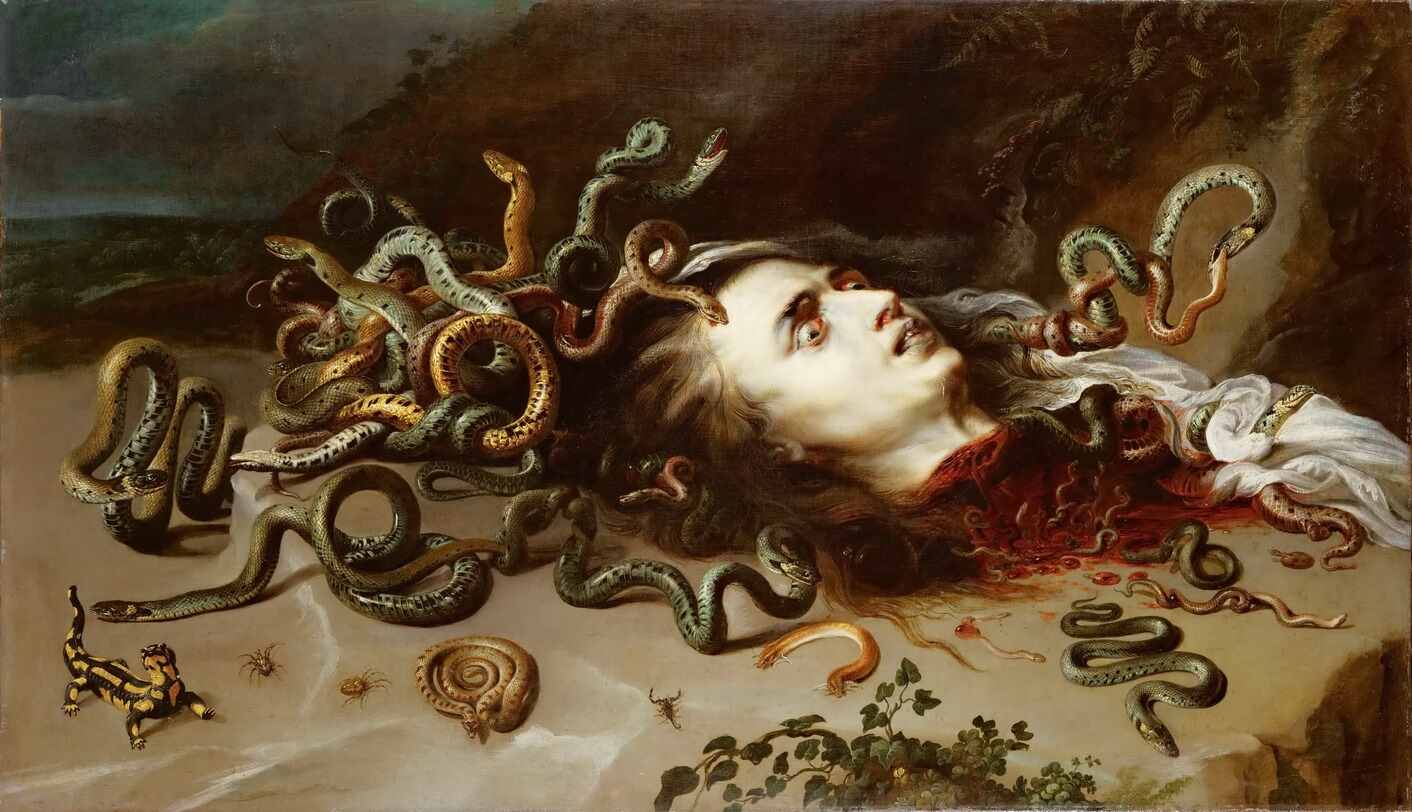
The painting’s vivid details and dramatic lighting draw the viewer into the scene, making it feel both real and mythical. This work reflects Rubens’s mastery of blending emotion, movement, and storytelling in a single image.
18. "The Rape of the Sabine Women" by Nicolas Poussin (1637–1638)
Nicolas Poussin’s “The Rape of the Sabine Women” is a powerful and dynamic painting that tells the story of the Roman men abducting the Sabine women to marry them and expand their population. The scene is chaotic, filled with dramatic poses and intense emotions, as the women struggle to escape their captors. Poussin’s use of classical elements, such as balanced composition and strong figures, creates a sense of order amid the chaos.
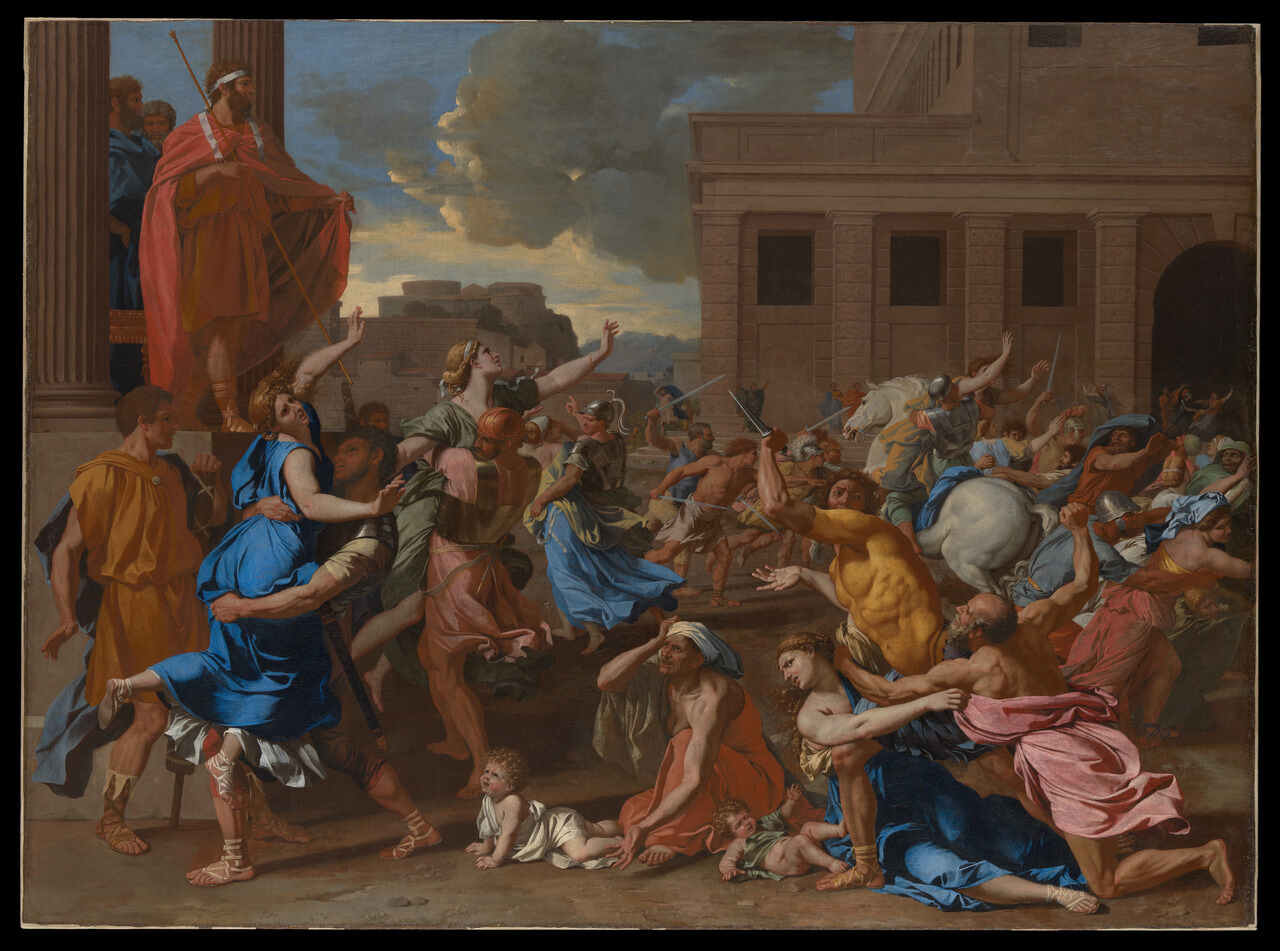
The painting explores themes of violence, power, and the complex relationships between men and women, making it both troubling and thought-provoking.
19. "The Massacre of the Innocents" by Peter Paul Rubens
“The Massacre of the Innocents” by Peter Paul Rubens is a powerful painting that shows the heartbreaking story from the Bible, where King Herod orders soldiers to kill all the baby boys in Bethlehem. The scene is full of chaos and emotion, with mothers fighting to protect their children and soldiers showing no mercy.

Rubens uses bright light and deep shadows to make the moment feel even more dramatic and intense. The painting shows themes of innocence, loss, and the pain of human suffering. Its energy and emotion make it one of the most unforgettable works in art history.
Why Dark Paintings Remain Relevant
Dark paintings continue to hold a special place in art and culture because they connect with deep emotions and ideas that are still important today. These artworks often deal with universal themes like fear, death, and the unknown, which people have always wondered about. They make us think about life in a serious way and ask big questions about who we are and what life means.
One reason dark paintings stay meaningful is that they challenge societal norms. They don’t shy away from difficult topics or uncomfortable truths. Instead, they face them head-on, showing us things that people might normally avoid talking about. This can make us think differently about the world and see things from a new perspective.
Engaging with dark art can also feel therapeutic or healing. Looking at these paintings allows people to face their own fears and emotions in a safe and creative way. It can be cathartic, helping us release pent-up feelings and understand ourselves better. Whether it’s the mystery, the beauty, or the emotions they bring out, dark paintings continue to inspire and move people, proving that their impact will never fade.
Conclusion
Dark paintings have a special power to capture our imagination and connect us with deep emotions. They show us the beauty in darkness and remind us of life’s mysteries. From their dramatic use of light and shadow to the stories they tell about fear, hope, and transformation, these artworks have a timeless value that continues to inspire people.
As Anselm Kiefer said:
"The darkness is a place of transformation, where we can shed our old selves and become new."
These paintings encourage us to look inward, think about our own lives, and find meaning in their messages. Everyone can interpret dark art differently, making it a deeply personal and unique experience.
If you feel inspired by the beauty and emotion of art, why not create your own masterpiece? Platforms like Photo2Painting allow you to turn your favorite memories into stunning custom paintings, blending personal stories with artistic expression. Take time to explore dark paintings in galleries or online, and perhaps bring your own artistic vision to life.
Frequently Asked Questions
Why do people like dark art?
People like dark art because it explores deep emotions like fear, sadness, and mystery. It makes us think about things like life, death, and the unknown. Some people enjoy the feeling of curiosity or even comfort that comes from seeing these emotions in art. Dark art often shows beauty in unusual or surprising ways, which makes it special to many viewers.
Why are Renaissance paintings so dark?
Renaissance paintings are dark because artists used a method called chiaroscuro, which mixes light and shadow to make scenes look realistic and dramatic. Over time, the materials used in these paintings—like oil paints and varnish—have aged, making the colors darker. This gives them a moodier appearance today compared to when they were first painted.
What does a dark background represent in art?
A dark background in art can symbolize mystery, sadness, or something unknown. It can also make the main subject stand out more because of the contrast. In portraits, for example, a dark background makes the person’s face and features look brighter and more dramatic. In other types of art, it sets a serious or emotional mood.
Why are Rembrandt’s paintings so dark?
Rembrandt’s paintings look dark because he used a technique that focuses on strong light and shadow to make his work look real and dramatic. This style, called chiaroscuro, was popular at the time. Over the years, the varnish and paints he used may have aged, making his paintings look even darker than they originally were.
What is the darkest art style?
One of the darkest art styles is tenebrism, which uses very strong contrasts between light and dark. Most of the painting is dark, with just a few bright areas to focus attention. Artists like Caravaggio are famous for using this style. Other dark styles include Gothic art, which shows scary or mysterious scenes, and Symbolism, which explores strange and emotional ideas.
What’s another word for dark art?
Another word for dark art is macabre art. This type of art often shows themes like death, fear, or mystery. Some people also call it gothic art or noir art, depending on the style and subject.
George, CEO of Photo2painting, is a passionate art lover and entrepreneur. He founded Photo2painting.com from scratch, inspired by his artist friends. As the company's CMO, he manages content and marketing.
Excellent Customer Reviews















































































































































